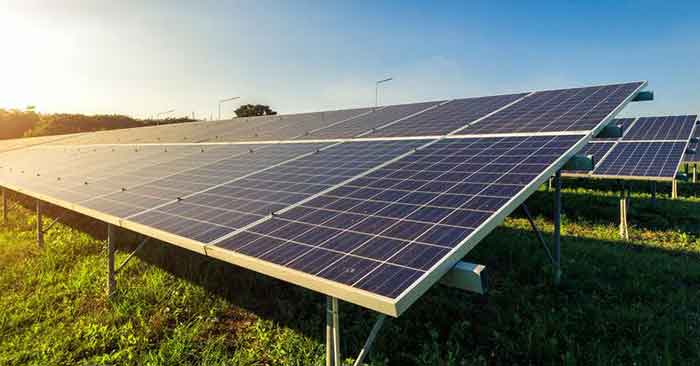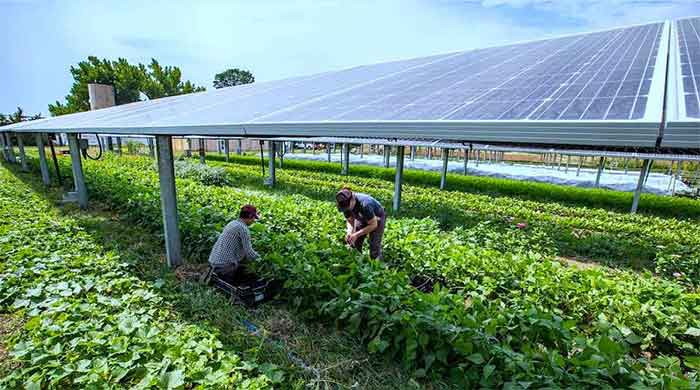
Little did Harish Hande know that the trip to Dominican Republic in conjunction with his doctoral thesis at the University of Massachusetts, would dramatically change his worldview and vocation forever. The Caribbean island nation was experimenting with solar powered energy solutions to alleviate poverty and had empirically achieved promising results. Harish quickly perceived great business opportunity to serve the underserved markets in India, his home country which is a microcosm of human deprivation and a melting pot of first-generation development issues. The bottom-of-the-pyramid in India was largely excluded, ostracized on low caste and class hierarchies, exploited only as vote banks, financially impoverished, voiceless and defenseless. Harish set out to uplift and empower these blighted souls, convinced of the power of distributed energy to change lives, he established Solar Light Private Limited (SELCO) in 1995 in rural Karnataka.
INDIA’S ON-GRID AND OFF-GRID ENERGY CONSUMERS
A recent draft of National Energy Policy (NEP), issued by government think-tank Niti Ayog, estimates that more than 300 million Indians do not have access to universal electricity, though there has been tremendous progress in the last decade. In the rural heartlands of India, wood and kerosene are still predominant fuels and the livelihoods of masses are inextricably intertwined with these polluting, unclean energy sources. Burning kerosene and wood in a three stone stove is equivalent to smoking two packets of cigarettes a day and therefore, the incidence of cancer and respiratory ailments are rising at an alarming rate in rural villages and shanty towns in the country. India’s on-grid energy production, reliant primarily on coal and hydro-electric power plants are plagued by inefficiencies in production, transmission and distribution. This high dependence on fossil energy has made India, the 3rd largest source of CO2 emissions and other noxious greenhouse gases on the planet.
SELCO BUSINESS MODEL
Harish’s iteration of SWOT Analysis and Porters Strategy Model of his last-mile energy solutions project, targeting the disadvantaged and downtrodden was to live among their communities to gain insight on market dynamics and customer needs. He spent considerable time amongst the Siddi community in Karnataka, trying to formulate a viable go-to-market and distribution strategy. He converged on an outsourcing model where he would procure solar lighting systems from Original Design Manufacturers (ODM) and direct selling to the targeted segments, who were subsistence and daily income hawkers, blacksmiths, street vendors on push carts and village households. SELCO would approach Rural Cooperative Banks and Microfinance Institutions (MFI) to finance end-users.
CHALLENGES AND SOLUTIONS TO THE MODEL
Harish soon ran into bottlenecks and ruefully realized that even wealthy rural households found their solar lighting system expensive and unaffordable. The daily income street vendors didn’t have the means to high initial capital investments required for the product, although, it was cost-effective compared to kerosene lamps customarily used to light their push carts for evening market. To compare costs, while a street vendor on an average spent Rs.15 per day for kerosene, the deflated cost of a solar light was a mere Rs.10 per day! Harish had his enlightenment in financial intelligence from a street vendor, who told him that paying Rs.300 a month in EMI while was expensive but Rs.10 a day remained affordable. This strategic insight warranted, that for the bottom-of-the-pyramid, designing innovative financial products, tailor-made to daily cash flows of their occupation remains critical for any new business or technology adoption. As a test case, SELCO renegotiated with banks by offering 100% bank guarantee for financial loans to these poor to access solar lights. The results were astounding. The loan repayments were prompt with near zero defaults.
Since banks were not willing to partake the transaction costs of appointing field agents for daily collection towards loan repayments from these end-users, SELCO devised another innovative model that created more entrepreneurs. On a daily financing scheme from banks and MFI’s, SELCO appointed and technically trained entrepreneurs, who set-up small battery charging centers, with the onus of customer acquisition. These new business owners rented out charged batteries to their customers daily, based on the hours of usage needs and at the end of the trading, collected rent and batteries from the street vendor depositing his daily EMI with the financing institution. The spillover effects of decentralized energy solutions were changing the poverty-ridden landscape radically. The SELCO model of scaling up was not only to sell more solar lighting systems, but also to create more entrepreneurs and to design innovative and customized financial products.
The entrepreneurial spirit of the poor was compelling and all the creditors paid off their liabilities, typically ranging from Rs.10,000 to Rs.15,000 in less than 24 months. Not only did solar lighting provide them with clean, sustainable energy, but also tremendously increased their productivity and scaled their net income. A roti maker who used to churn out 75 rotis a day manually, increased the number to 500 with a solar powered machine. SELCO provided market linkages to sell the additional rotis. At the end of the loan term, most customers of solar lighting returned for fresh loans for diversified SELCO products like solar powered sewing machines, butter churners, grinders, roti rolling and milking machines. Sustainable energy can be instrumental in catapulting the poor, multiple layers on the social ladder.
SOLAR LIGHTING FACILITATING EDUCATION
SELCO had since diversified its solar lighting segments to institutional B2B and B2G customers, targeting primary and secondary schools. The solar panels and DC charging stations were installed in the school precincts, and accounted as infrastructure costs of education. Bank financing was done for lights and batteries for households. Each child inevitably had to carry the battery- the size of a lunch box- to school for charging during the day which, powered lights at home at night. This model attained twin objectives of enhancing school attendance and lighting homes with clean energy, with exponential ROI, short break-even and almost 20 years of luminaire life.
SELCO SUCCESS STORY
SELCO, since its inception has impacted more than 500,000 households across six states in India. It collaborates with over 12,000 institutions ranging from schools, orphanages, primary health centers, poultry farms that are either proprietorship or private-public partnerships. SELCO’S product portfolio has expanded to street lighting, outdoor lighting, water heaters, inverter systems, power and equipment for health centers, photocopying and printing, digital education tools, all harnessing the unlimited and democratic power of solar energy. The organization has debunked few entrenched myths of the corporate world in its 25-year journey. The first was that poor people cannot afford sustainable technologies as the organization has hitherto, installed over 450,000 solar solutions, touted as ‘expensive’ and incidentally, loans are fully paid by the poor, through tailor-made financial models centered on cash flows. The second myth was the cynical mindset that poor cannot maintain sustainable technologies and the third demystifying one was that social enterprises cannot be run as commercial, for-profit enterprises. SELCO’s books have been returning profitable net income for the past 15 years The newly incepted non-profit organization management ventures, SELCO Foundation and SELCO Incubation provides entrepreneurial training and guidance for young aspirants and social enterprise start-ups in the energy sector across India.
Harish Hande has radically redefined business and marketing models to reach out to the bottom-of-the-pyramid customers. He consistently emphasizes in his key note lectures around the world that social upliftment of the poor using sustainable energy is through empowering and transforming them into asset owners. The more the poor allocate their non-disposable income for consumption, the poorer they will become. Higher productivity and economies of scale achieved through uninterrupted clean energy technologies help the poor traders to move from non-disposable income to disposable income categories, thus raising the quality of their lives in that transition. SELCO focuses their strategies to build synergies and ecosystems so that the poor become partners and not just beneficiaries of subsidies and welfare schemes. SELCO has managed to identify and build grass root level leadership among the poor with solar energy and in the process, sending a strong message to the business world, that there exits a clear distinction between intellectual and financial poverty.
Jayakhosh Chidambaran is a management consultant and researcher.














































